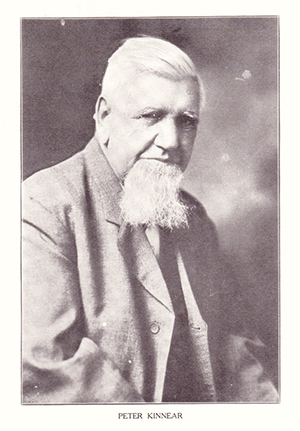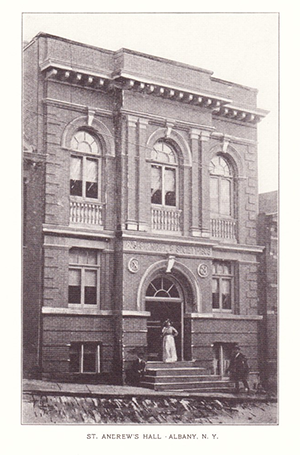The Builder – 1849-1913
Throughout the 19th century the Society grew steadily, welcoming Scottish immigrants as they came to Albany and drawing them into the Society’s life. Immigration increased with the 1925 opening of the Erie Canal. Up to 1900 the majority of the Society’s officers were native-born Scots.
In 1849 the Society was fortunate when the immigrant Peter Kinnear became a member. Apprenticed as a machinist in Scotland he grew as a manufacturer in Albany. He devoted himself to the St. Andrew’s Society, spending 15 years as Secretary. He knew all its members (including Archibald McIntyre) and ultimately compiled the first history of the Society.
He had a gift for bringing people together. As a friend of the McPherson family he was executor of Mary McPherson’s will which set aside $20,000 for building a monument to Robert Burns. Kinnear selected sculptor Charles Calverly to design the monument and in 1888 this was dedicated in Washington Park as her gift to the City of Albany.
St. Andrew’s Hall
For ninety years the Society met in coffee shops, private homes, and borrowed downtown offices. As the Society grew these accommodations became increasingly inadequate. Fortunately for the Society, Peter Kinnear’s career as a manufacturer began to grow quickly. In 1875 he started to work with a new plastic called celluloid, specializing in the making of billiard balls. He became President of the Society from 1880-1890; from 1898 on he probably began to think about creating a permanent home for the Society. With his leadership this was accomplished in time for the Society’s centennial celebration in 1903. St. Andrew’s Hall was located at 69 Howard Street within two blocks of the Capitol. It was a two-story building with 6500 square feet of floor space, big enough for regular meetings, large social events, committee rooms, and a library donated by Andrew Carnegie.


